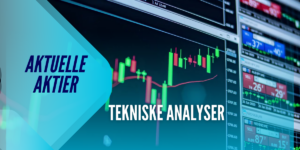“Forgive the macros – they know not what they do.”
That is how Morgan Stanley’s Adam Longson begins his note explaining why while risks for oil continue to rise, the “macro rally can persist.” Specifically he says that while “oil continues to rise on the back of macro funds, CTAs, index/ETF flows and investors fearful of missing out” the fundamentals remain bearish and are set to deteriorate further, “esp if prices move higher. Non-fundamental rallies can last for several months and near-term catalysts may be lacking, but a macro unwind could cause severe selling given positioning and the nature of the players in this rally.”
In justifying the relentless “macro” driven buying, Longson writes that “close your eyes and buy seems to be the mantra for now.”
Here a curious question emerges: will the algo buying push oil back to the $60/bbl level we saw last summer. This is his answer.
While fundamentals don’t justify a cyclical recovery in oil yet, the market continues to move higher. The primary driving force has been macro funds, index money and CTAs. Technicals and momentum have only added to it, and there is a sense from some of investors that they need to buy for fear of missing out. Also similar to 2015, we see a confirmation bias where any bullish data point is embraced (e.g. supply outages, weekly US production, etc) and bearish data points are dismissed or spun as a buying opportunity (i.e. the worse is behind us).
Non-fundamental rallies can last for several months before the physical market pushes back. In 2015, the rally to $60 WTI lasted for over 2 months.
Yet, unlike other assets, there is a physical market behind commodities. If prices move too early, there are real world implications, even if those facts are slow to play out. It’s one reason why expectations investing is less effective in commodities. Nothing happens until it happens. Fundamentals are poor and set to deteriorate. The macro/CTA players are mostly generalists and quants expressing a macro view. Yet, the market impact underscores how macro and technical oil trading is at the moment. The problem is that prices are approaching important fundamental levels, and the fundamental trends look worse.
Meanwhile, the fundamentals are set to deteriorate:
Fundamentals are poor and set to deteriorate. The macro/CTA players are mostly generalists and quants expressing a macro view. Yet, the market impact underscores how macro and technical oil trading is at the moment. The problem is that prices are approaching important fundamental levels, and the fundamental trends look worse.
A significant number of supply outages are set to resolve in the coming weeks/months.
- OPEC production could rise nearly 1 mmb/d from Mar – June, and Doha’s failure could setup a market share war with many producers now calling for growth.
- Prices above $45 WTI will start to impact the rate of decline in US supply and should attract much more producer hedging. We are also already seeing increased appetite for energy lending after this move – a reversal from Jan, which excited the market.
- Gasoline trends in Asia look quite poor with tankers of product floating off Asia. EM ex. China oil demand has also been underwhelming, which is the key area of growth.
Near-term catalysts may be lacking, but a macro unwind could cause severe selling pressure. The extreme long spec positions from many of these funds could prove problematic. Realization of the MS economics and FX views could setup for an unwind in 2H16 given their sensitivity to macro trends.
Note that as we pointed out over the weekend, net spec positions recently shifted from record short to record long. This may be just the positional unwind catalyst that leads to Longson’s “severe selling pressure.” That and the realization that Mid-east is now skewed bearish.
The Middle East is skewed bearish, in contrast to the optimism surrounding energy in the US and Europe. We spent several days in the Middle East last week with corporate clients and investors. While US investors are increasingly bullish based on US trends, the tone in the Middle East was much more bearish, particularly near term. Several investors stated they would be sellers if oil reached $50. While every region can be biased by local life, we find this sentiment interesting given the importance of the debate around OPEC supply and Middle East demand.
Several key ideas and concerns were reiterated:
1. A view that OPEC production is likely going higher, not lower. The view was that hoping for OPEC intervention is and has been misguided. Perhaps this investor base is too close to tensions in the region, but most investors expect OPEC and potentially Russian production to rise post-Doha. Conversely, macro funds and CTAs are driving the front higher, and now there are renewed hopes on the tape of another production freeze meeting or positive trends at the OPEC meeting.
In our base case, we see OPEC production rising nearly 1 mmb/d by June from Mar-16’s 32.5 mmb/d. Much of the increase is simply a seasonal ramp from Saudi Arabia, Iran’s ramp, and outages resolving. With more aggressive efforts from Saudi Arabia, Iran and Kuwait, production could rise above 34 in short order, which would offset both our estimated global crude demand growth and US declines for 2016. 35.5 mmb/d is possible with Libya, more Iran success and Saudi Arabia at 11.5.
2. Opinions on EM demand and GDP were not optimistic. We heard concern about the impact of reform and oil subsidy removal on local GDP and oil demand, inline with our view. We find this particularly interesting from an investor base able to view these changes in real time. We also heard concerns about the sustainability of the EM rally and China stimulus.
3. There is a concern that US supply might respond if oil moves higher too quickly. Most investors expressed that oversupply still exists and that shale has permanently changed the dynamic of the oil market.
Finally, MS touches on a topic we discussed a month ago when we explained that the collapsing prompt contango is about to shift into backwardation making offshore storage unprofitable. Here is MS:
Brent backwardation reflects regional supply issues, not an improving balance. As of mid-April, the Brent 1-2 time spread became backwardated (a situation where the front month oil futures contract trades at a premium to the second month futures contract). As we’ve long noted, there is a strong link between regional storage and prompt month structure, and such a situation typically indicates physical supply tightness for the contract time frames. The same is true here, as front-month Brent is trading June 2016 delivery, which coincides with higher North Sea field maintenance and seasonally strong refinery demand.
We continue to stress this is a temporary regional dynamic, that has occurred many times in the past, not a bullish global signal. Given the very limited streams and production supporting the BFOE market, lost cargoes and incremental buyers can move the market significantly. This was particularly pronounced during 2012/13 when a Korea tax arbitrage drove incremental buying of Forties and periods of sudden steep backwardation. Upcoming North Sea field maintenance also has a history of lifting prompt month Brent spreads, which then typically fade as supply returns. Global outages in the Atlantic Basin have only reinforced the near term impact. However, we’ve already seen the magnitude of backwardation begin to fade heading towards expiry even as flat price rises.
Backwardation likely attracted additional inflows from passive investors. Passive commodity investment tends to follow commodities that are in backwardation as they not only provide a venue for profiting from overall price appreciation but also provide positive roll yield. As Brent flipped into backwardation, it likely attracted more inflows from index strategies.
Brent’s upcoming roll could be a negative catalyst: backwardation is not present beyond the prompt month. As a result, we would expect that when the backwardation dissipates (i.e., when the June Brent contract expires at month-end and the market is no longer pricing forward outages/maintenance), this incremental passive investing could slow or exit the market, adding downside pressure to front-month pricing.
So does all that matter? Judging by today’s spike in oil, which just pushed above $44, and is now above key resistance levels, the CTA and other “macros” remain firmly in control as fundamentals continue to be completely ignored. For how much longer this can continue is anyone’s guess









